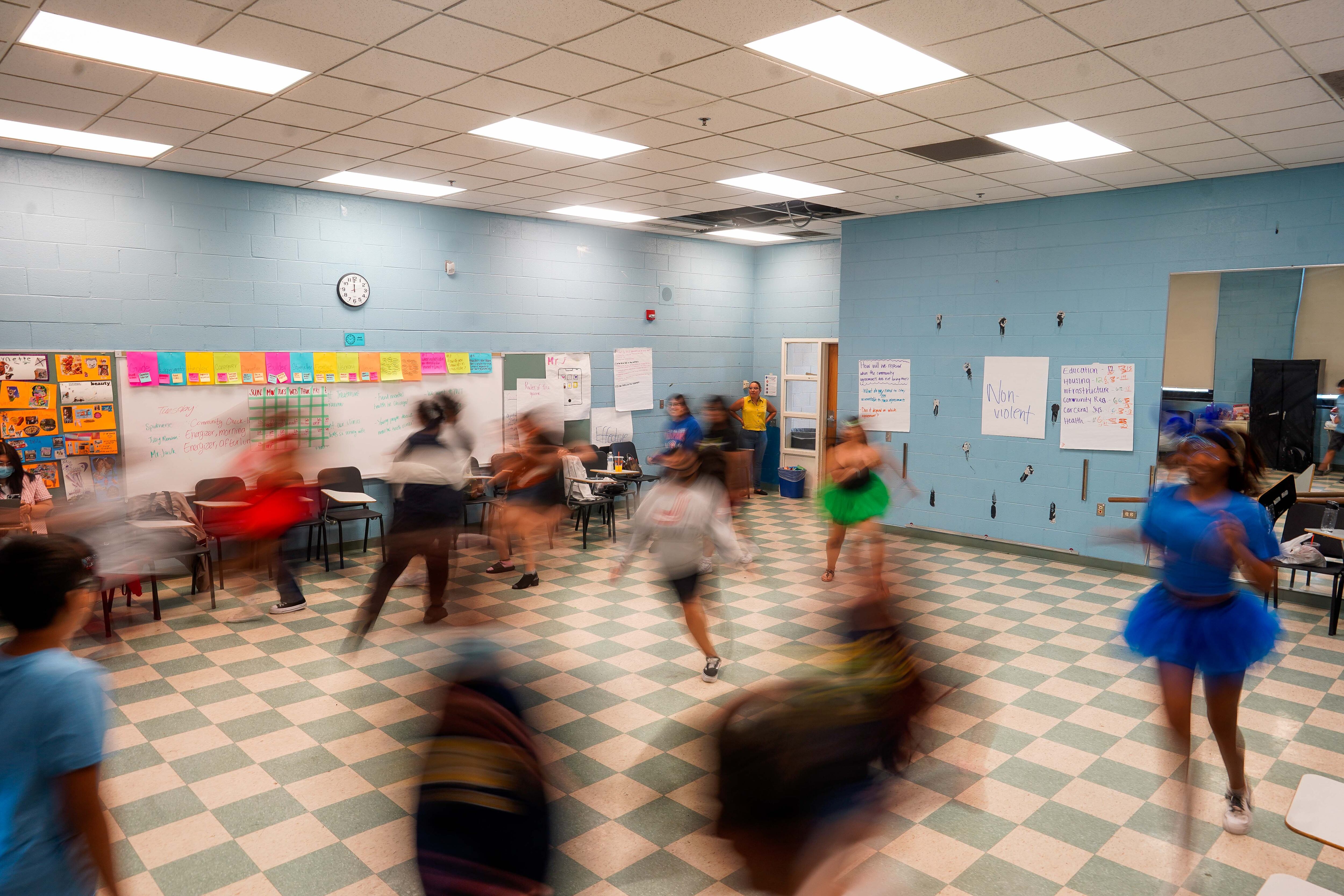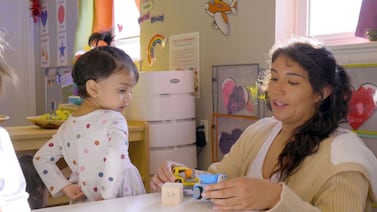Chicago educators and advocates are concerned about how Mayor Brandon Johnson’s new 60-day limit for shelter stays for migrant families will impact attendance and stability for migrant students.
The new rule comes as the city has struggled to house migrants. More than 22,000 have arrived from the Southern border since August 2022, many fleeing economic and political upheaval in Central and South American countries. City and state officials have promised to boost efforts to help families get resettled and find more permanent housing, a commitment that comes just as a state-operated rental assistance program will no longer apply to newly arrived immigrants who are entering shelters, Block Club Chicago reported.
About 50 families have already received the notices, and another 3,000 will get them on Dec. 4.
Advocates said losing shelter could mean more absences among migrant students who are homeless — formally known as students living in temporary living situations. That designation includes children in shelter, living doubled up with another family, or living in a public place. As of Oct. 31, average attendance rates this school year for homeless students are 5 percentage points lower than their peers with permanent housing, according to Chicago Public Schools data shared with the Chicago Coalition for the Homeless.
School stability is related to academic success. A 2015 study that examined New York City students found that children who transferred schools were more likely to be chronically absent or miss at least 10% of their school days. Chronically absent students who were also homeless were three times more likely to repeat the same grade than homeless students who missed fewer than five days of school, the report found.
“We’re talking about kids who have been around for two months, who have gotten into a routine, maybe made some friends, have some sense of control finally, where they can get two hot meals a day — we’re talking about sending those families back to the bus landing spot,” said Gabriel Paez, a bilingual teacher on the West Side, of the mayor’s new rule.
Sixty days is a “very short time” to find housing, especially for newcomers with language barriers who are dealing with asylum cases or have not been authorized to work yet, said Patricia Nix-Hodes, director of the Law Project of the Chicago Coalition for the Homeless.
If families don’t have permanent housing lined up, they can return to the “landing zone” — the downtown area where most buses first drop off newcomers — and can request a new shelter placement. Families can stay in their shelter under “extenuating circumstances,” such as a medical issue, if there is extreme cold, or if they’ve obtained a lease with a move-in date that starts later than when they must leave shelter, the mayor’s office said.
A spokesperson for the mayor declined to comment. In a statement, a district spokesperson said it is working with the city and schools to “ensure new arrival students, who are nearly all considered Students in Temporary Living Situations (STLS), can get access to a Pre-K-12 education within our system that offers the appropriate services, including English Learner services.”
Homeless children have certain rights enshrined in federal law aimed at maintaining stability for them at school, including the ability to stay at the school where they’ve been attending.
Here are three education rights that families living in temporary housing should know about as the city’s new shelter rule takes effect:
Homeless students have the right to stay in the same school
Students living in temporary shelters who have enrolled in the local school or a nearby one are entitled to stay at the same school even if they’re forced to leave the shelter after 60 days.
This is true for any student who becomes homeless. Federal law protects their right to remain in their so-called “origin school.”
Just as any other Chicago Public Schools student, homeless students can enroll in the local neighborhood school in their new community by simply walking in. Also like any other student, they can apply to selective or magnet schools, but the deadline to apply for these schools for next academic year has passed.
Migrant students may also be referred by other city agencies, such as the Department of Family and Support Services, to receive enrollment help from the district’s central office, including at the city’s Pilot Welcome Center at Clemente High School on the West Side.
In that case, the district will enroll students based on where they live, the students’ needs — such as English language services — and “existing capacity and resources at the school.” If there are space issues at a school, the district “can assist with an alternate school assignment,” a spokesperson said.
Once 20 or more students with the same native language enroll at a school, state law requires they launch a Transitional Bilingual Education program. Such programs require instruction in both English and the native language, such as Spanish.
The district has budgeted $15 million to hire more bilingual teachers, dual-language program coordinators, and “other resources to support English learners,” a spokesperson said.
Homeless students have the right to transportation
Homeless students also have the right to receive transportation to school even if they move. And, according to CPS guidelines, their school must inform the student and a parent about transportation services. If a student finds permanent housing, they are still entitled to transportation until the end of the school year.
According to CPS guidelines, homeless students in need of transportation must receive a CTA card within three days of requesting one. Children in preschool through sixth grade can receive an additional card so that a parent can accompany them on public transit.
Students in those grades can also apply for school bus service if a caregiver can’t accompany them to school because the parent has work or education conflicts, a mental or physical disability, or the shelter won’t allow parents to leave during the hours of dropoff and pickup.
Citing a driver shortage, the district this year has limited school bus service to students with disabilities and those who are homeless. As of October, 113 homeless students qualified for busing, but it’s unclear how many of them opted instead for a financial reimbursement.
Homeless students don’t need paperwork to enroll
Schools must enroll students who are homeless even if they don’t have records normally needed to enroll, such as immunization or previous school records, proof of guardianship, or proof of residence, according to the district.
Families fleeing domestic violence or political turmoil may not have grabbed important documents, Nix-Hodes said.
It’s up to the school to “sensitively” identify that a family seeking enrollment is homeless without violating their privacy, Nix-Hodes added.
Reema Amin is a reporter covering Chicago Public Schools. Contact Reema at ramin@chalkbeat.org.







